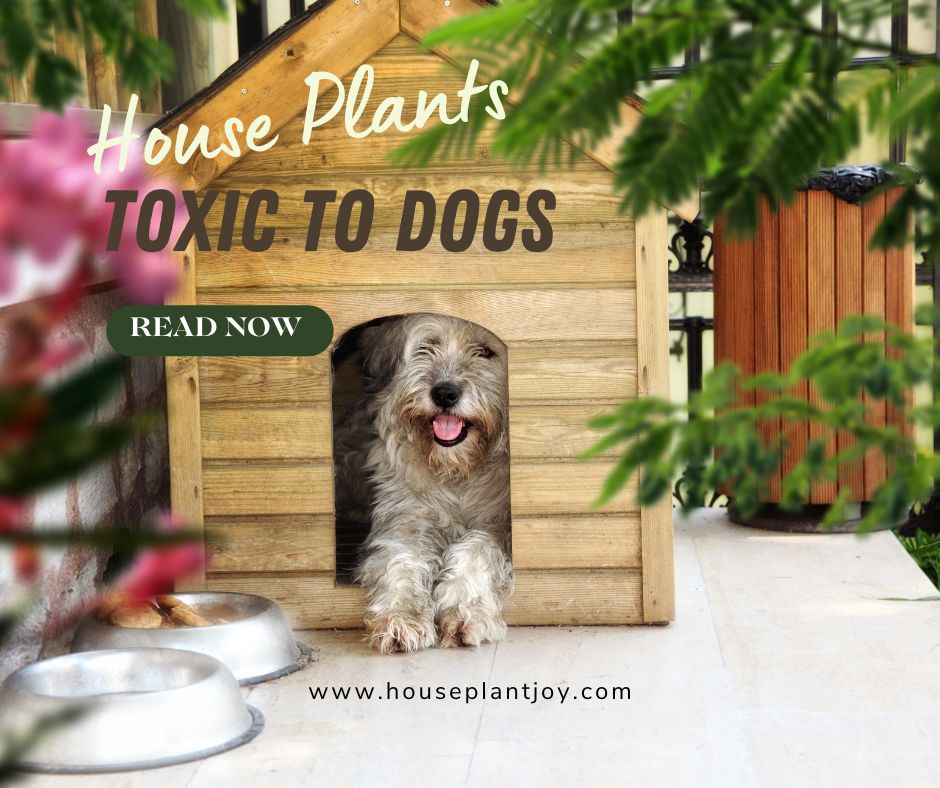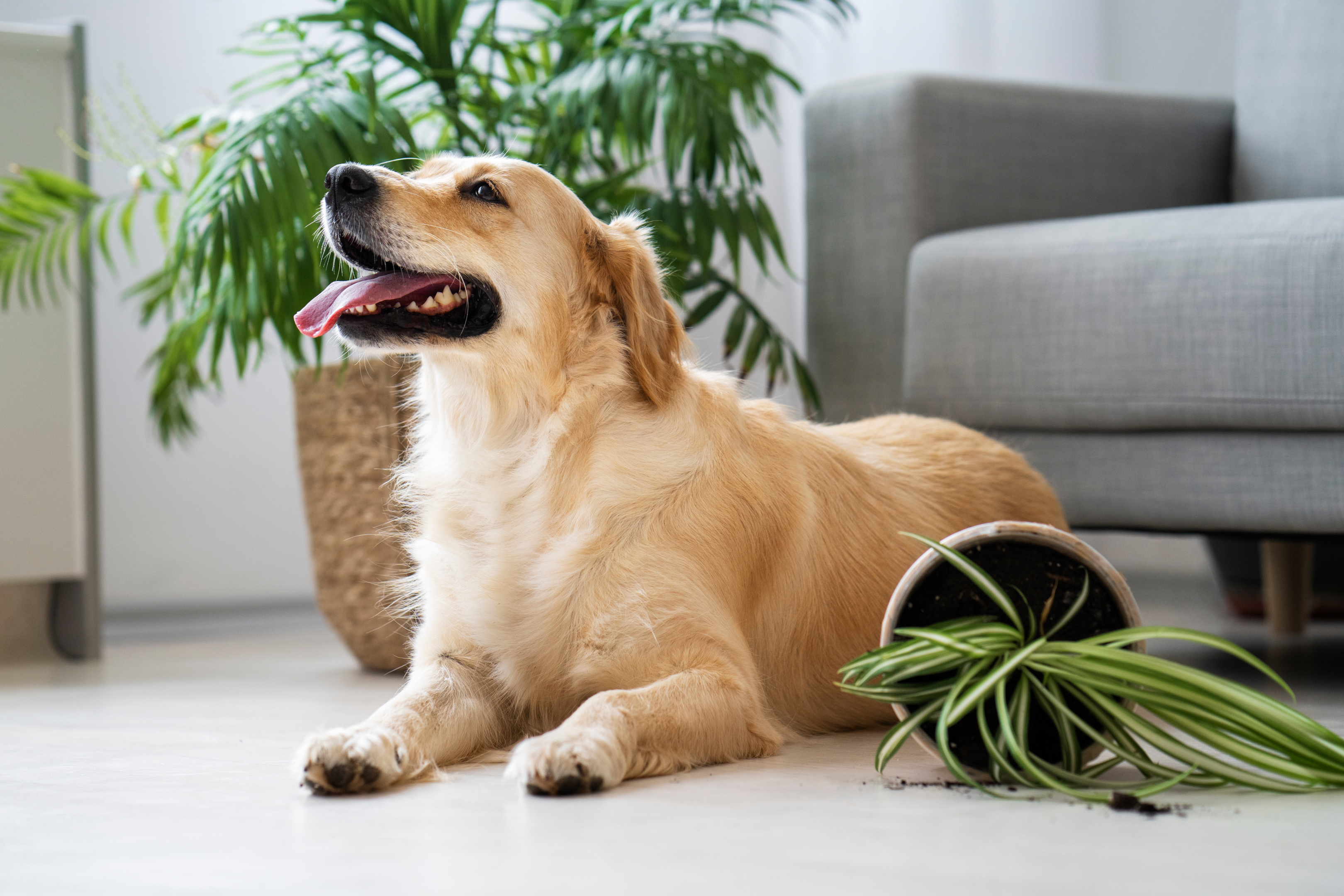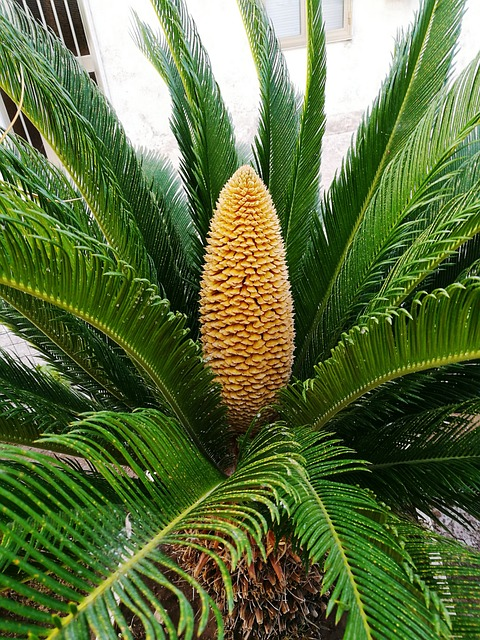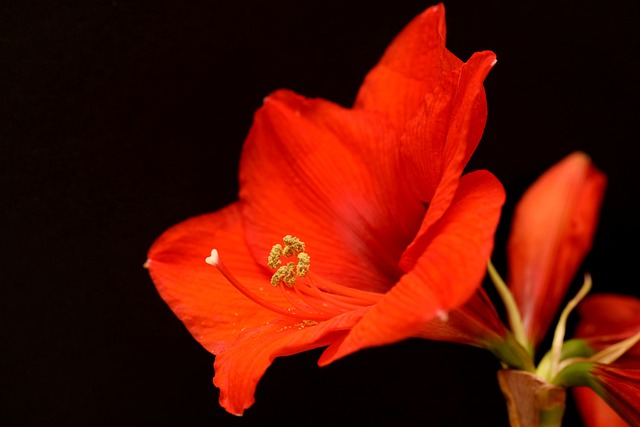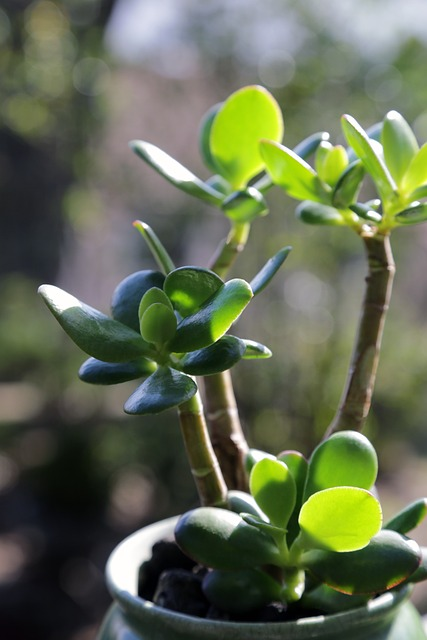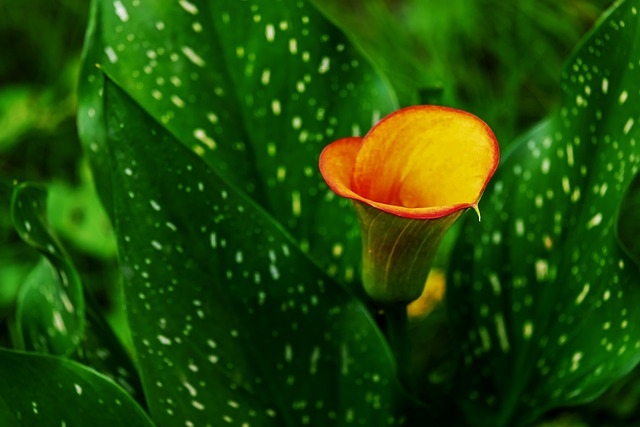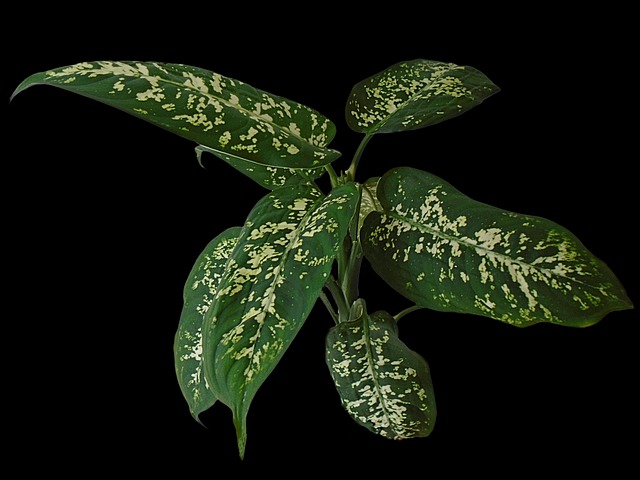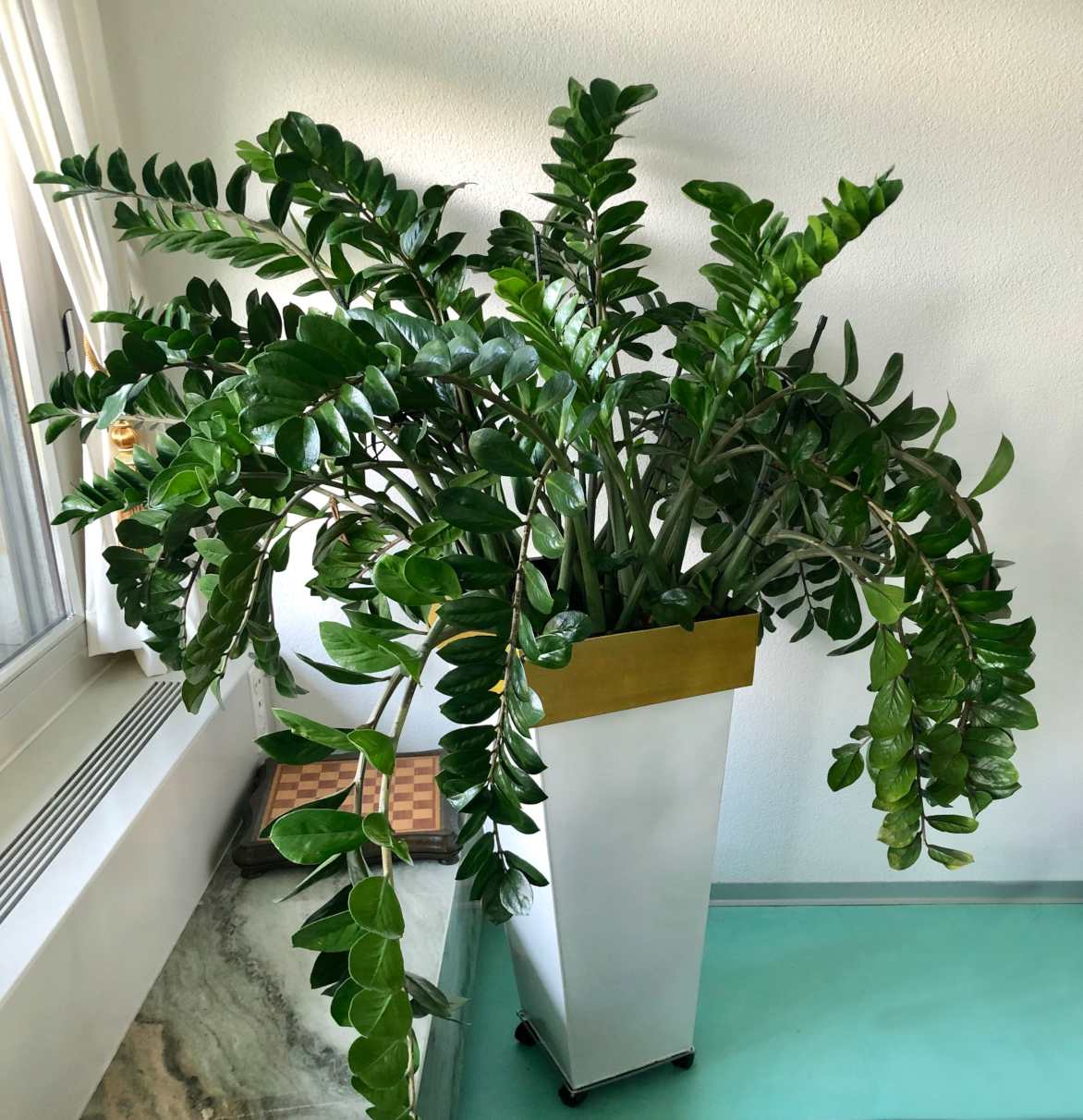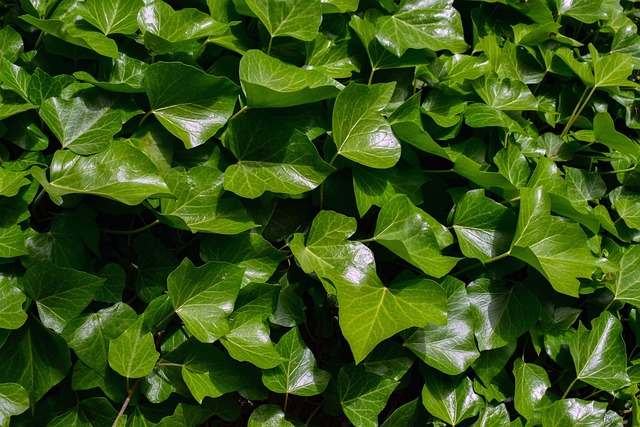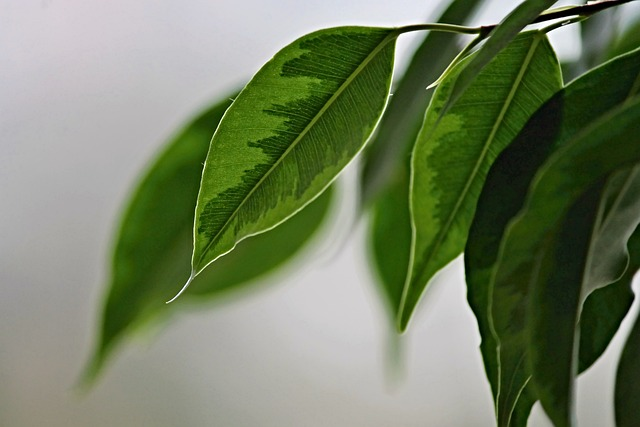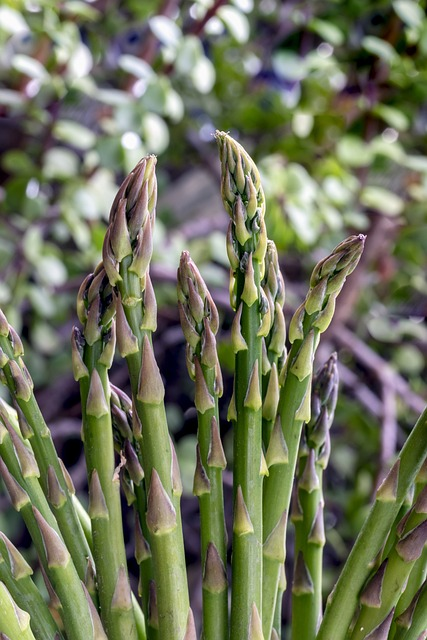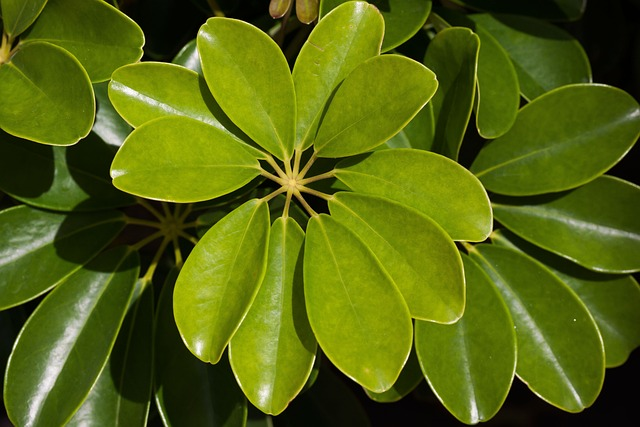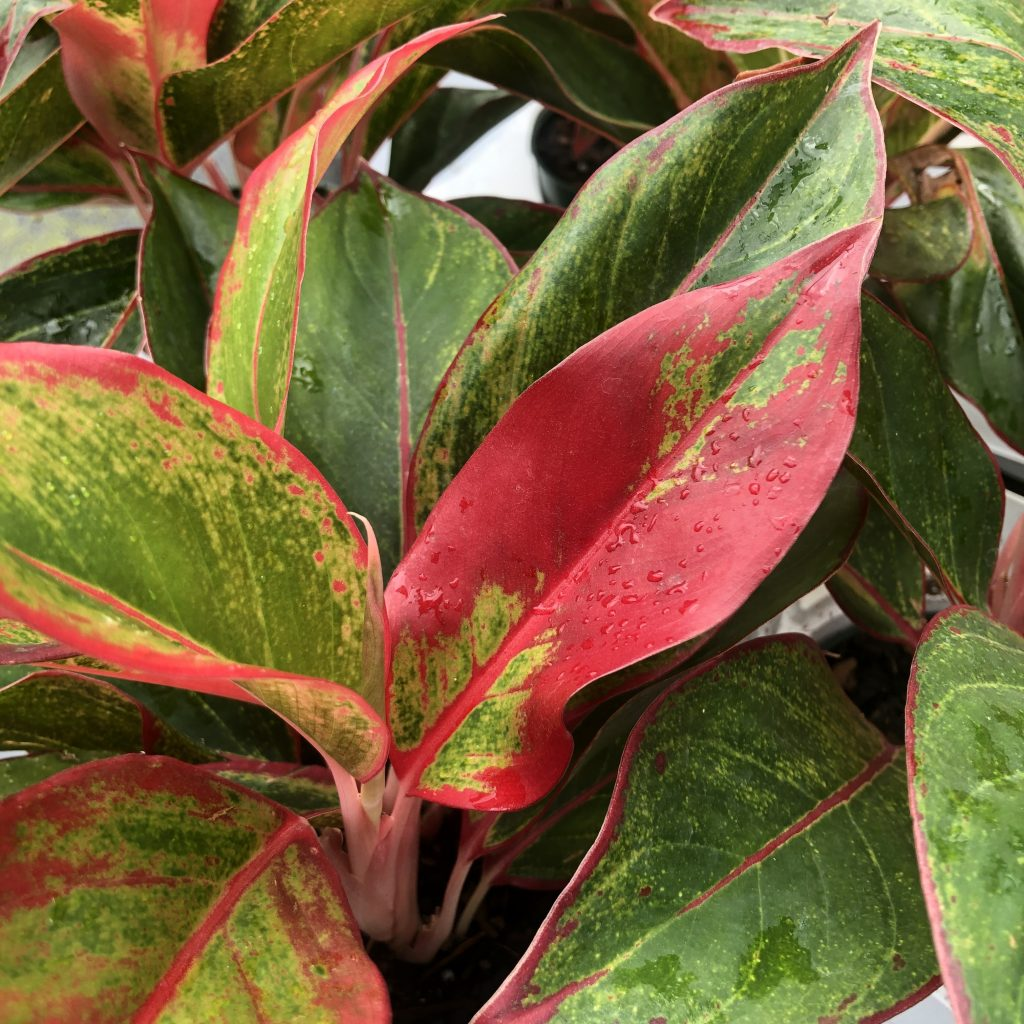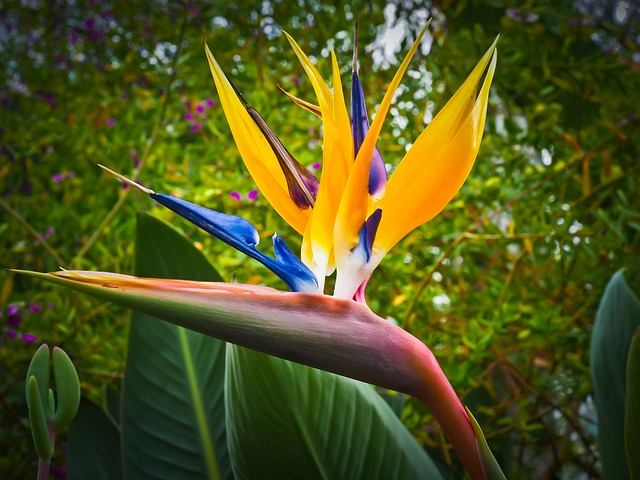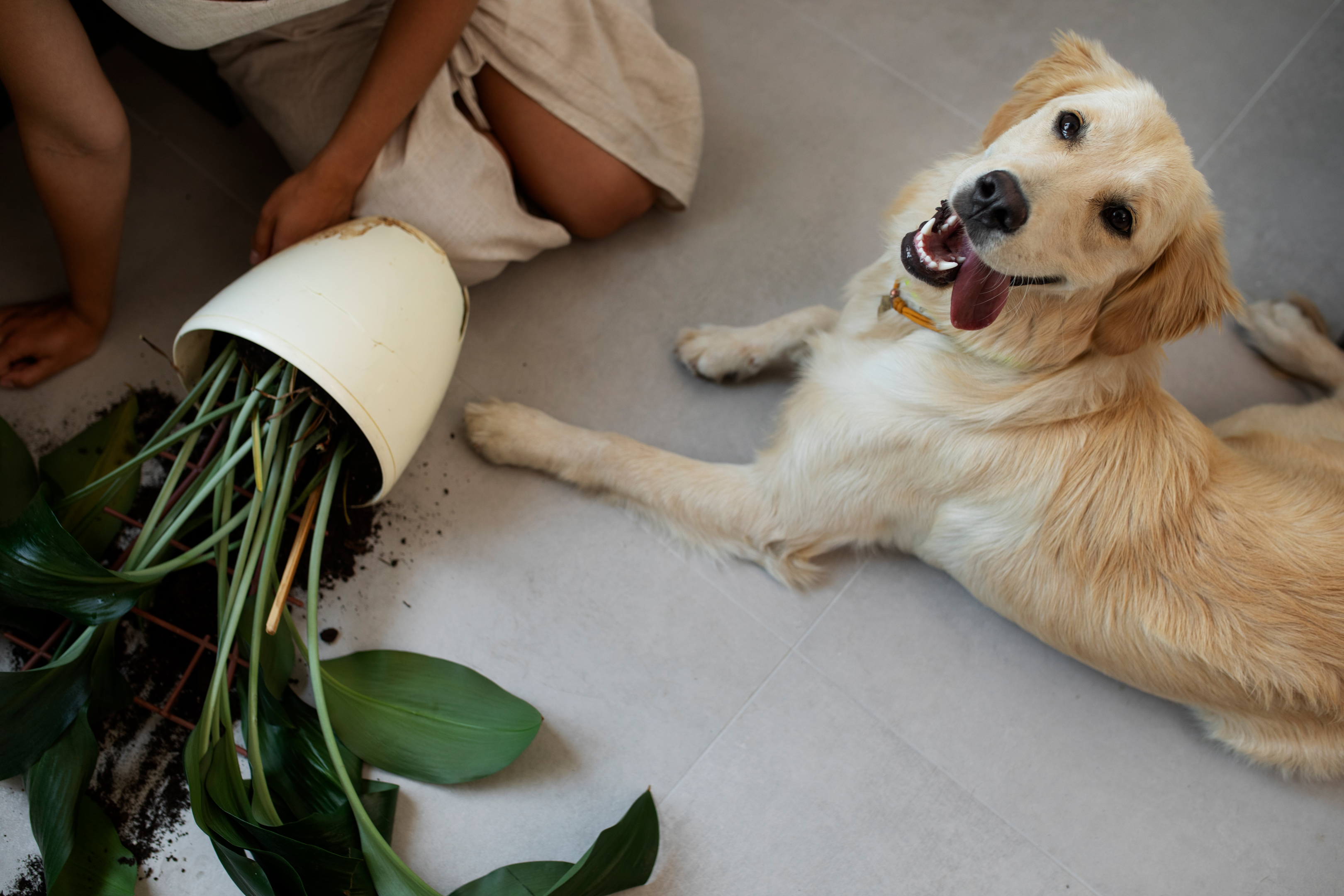HousePlantJoy is supported by our audience. When you purchase through one of our links, we may earn a small affiliate commission. As an Amazon Associate I earn from qualifying purchases. Your cost is not affected.
==================
Hey there, plant and pup lovers! We all know our furry friends can’t resist getting their noses and sometimes chewing into everything around the house. But did you know that some of those beautiful house plants you adore could harm your dogs if they chew them? In this article, we will spill the beans on those not-so-pet-friendly plants so you can keep your pet companion safe and your indoor jungle thriving. Let’s dig in!
The Toxicity of Plants in Dogs
Just like how some foods affect us differently, the same goes for plants and dogs. It’s a mix of the plant type, how much your pup got, and their size.
Some plants are super toxic and potentially life-threatening. But then some might just give your pup a minor inconvenience. And some plants, if ingested in enormous amounts, can sadly be life-threatening for our four-legged friends.
Now, what’s important to remember that each plant comes with its own clinical signs. These are the signals your pup’s body gives off if they’ve encountered a not-so-friendly plant. So, when it comes to plants and dogs, it’s all about a mix of factors. If you ever suspect your pup has had a plant nibble, or if they’re showing some gastrointestinal symptoms or signs, don’t hesitate to contact a vet for advice. It’s always better to be safe than sorry when our furry pals are involved!
Beware of These Toxic House Plants for Dogs
Our adorable companions truly fill our lives with happiness, and as conscientious pet caregivers, it’s vital to establish a secure setting that ensures their well-being. While houseplants add a touch of nature and beauty to our homes, some of them can actually be toxic to dogs. Here are a few common houseplants that you might want to reconsider if you have a canine companion:
1. Sago Palm
Sago palms are not safe for dogs at all. Every part of the sago palm, like the leaves, trunk, and seeds, is highly toxic and has this toxin called cycasin. Sadly, it’s really dangerous for dogs and can even be deadly. So, if your furry friend gets into any part of a sago palm, getting them to a vet immediately is super important.
Symptoms: Vomiting, Diarrhea, Abdominal pain, Lethargy, Irritability, Depression, Incoordination, Seizures, Death.
2. Amaryllis
Amaryllis plants (scientifically known as hippeastrum spp.) aren’t safe for dogs. The bulbs are the really risky part, but honestly, all bits of the plant can cause problems if your pup gets a taste. The culprit here is this thing called lycorine – it’s the toxin in amaryllis that can make dogs sick. Amaryllis poisoning can cause liver failure after a days of ingestion.
Toxicity Level: Severe
Symptoms: Vomiting, Diarrhea, Abdominal pain, Lethargy, Tremors, Convulsions, Low blood pressure, Abnormal heart rhythm.
3. Jade Plant
Jade plants are house plants that are a no-go for your pets. You might have heard them called money trees or rubber plants, but their scientific name is crassula ovata. People dig having jade plants in their homes because they’re like the easy-breezy champs of houseplants. They’re super chill to care for and don’t mind hanging out in different living conditions. But here’s the twist: even though they’re low-maintenance for us humans, they’re not the best buddies for dogs and cats. Here’s the scoop: Every part of this plant can spell trouble if your pup decides to snack on it. But the leaves are the real danger zone. The exact toxic component of jade plants remains a mystery, but it’s believed to involve a compound known as saponin potentially.
Symptoms: Gastrointestinal irritation, Oral irritation, Mild lethargy.
4. Calla Lily
You know those gorgeous Calla lilies, right? People love using them in bouquets and fancy arrangements. But guess what? As much as they’re a feast for the eyes, they’re a total no-no for our furry friends, like dogs and cats. These plants contain insoluble calcium oxalate crystals. If pets take nibble, it can mess up their mouths, making them drool like crazy, have trouble swallowing, throw up, and lose interest in food. And if things get really bad, it might even mess with their breathing and even death.
Symptoms: Oral irritation and pain, excessive drooling, difficulty swallowing, vomiting, decreased appetite, swelling of the lips, tongue, and throat, and respiratory distress.
5. Dumb Cane
Dumb cane (Dieffenbachia) house plants are indeed toxic to dogs. Inside it, there’s a component known as calcium oxalate crystals. It can be highly irritating if ingested by dogs. If a dog chews or eats any part of these toxic plants, it can lead to serious problems for your pet dog.
Symptoms: Oral irritation, excessive drooling, difficulty swallowing, vomiting, diarrhea, lethargy.
6. ZZ Plant
Ever heard of ZZ plants? They’re also called zamioculcas zamiifolia, but let’s stick with ZZ plants for short. These are some seriously cool house plants that people love having around. Do you know why? Well, they’re like the kings of low maintenance – they’re chill and easygoing. Plus, they’re not just good-looking. They’re also on a mission to clean up the air. ZZ plants are somewhat not-so-great for dogs. Every part of the plant, whether the leaves, stems, roots, or even the sap, has calcium oxalate crystals. These crystals can bother you if your pup gives them a taste – they might cause irritation and puffiness in their mouth, throat, and tummy. So, keeping these ZZ plants away from your furry friend is best to avoid unwanted discomfort.
Symptoms: Drooling, vomiting, diarrhea, oral pain or burning in mouth and throat, Lips and tongue swelling, and throat, difficulty breathing.
7. English Ivy
English ivy, also known as hedera helix, is a popular house plants and garden plant. This vine rapidly grows and can quickly climb walls and fences. English ivy is toxic to dogs because it contains saponins, a glycoside type. And these could be better for dogs. If your dog decides to have a taste of English ivy, these compounds can cause some harm. It’s best to ensure your pup steers clear of this plant to avoid unwanted issues.
Symptoms: Vomiting, diarrhea, hypersalivation, pain in abdominal, lethargy, tremors, seizures, and in severe cases, death.
8. Ficus Benjamina
You might have seen the weeping fig or fig tree, also known as ficus benjamina, around as a common house plant. It’s got those shiny leaves and branches that hang down – pretty cool, right? But here’s the thing: if you’ve got a dog, you’ll want to be careful. This plant might look nice, but it’s not safe for them. The sap contains substances known as ficin and ficusin. If your furry buddy gets in touch with these, it could result in irritation and inflammation. So, keeping your furry friend away from this plant is probably a good way to avoid discomfort. So, keeping your furry friend away from this plant is probably a good way to avoid discomfort.
Symptoms: Vomiting, diarrhea, hypersalivation, excessive drooling, difficulty breathing, swelling of the lips, tongue, and throat, blistering of the skin, and in severe cases, death.
9. Asparagus Fern
It’s a house plants that are chilling in people’s homes – it’s got those dainty leaves that give it a delicate vibe. But guess what? If you’ve got a dog, you might think twice about having this plant around. Even though it looks nice, it’s not the best for our furry friends. This plant can pose a danger to dogs, and the troublemaker here is a substance known as sapogenin. It’s a strange term, but a steroid can trigger many problems if dogs nibble on it. So, choosing a different plant instead of an asparagus fern is probably wiser to keep your pup out of any potential trouble. So, choosing a different plant instead of an asparagus fern is probably more intelligent to keep your pup out of trouble.
Symptoms: Vomiting, diarrhea, abdominal pain, lethargy, hypersalivation, seizures, in severe cases, death.
10. Schefflera
Let’s talk about Schefflera – it’s part of the flowering plant family called Araliaceae. You might have heard of some of its plant pals like dieffenbachia, calla lily, arrowhead, dumbcane, peace lily, philodendron, pothos, umbrella plant, elephant ear, Chinese evergreen, and Schefflera – quite the plant squad, right? Now, the schefflera goes by a few names, like umbrella tree, octopus tree, and starleaf.
Scheffleras is one of the popular house plants. People love having them in their homes because they’re pretty chill to care for and can put up with different living conditions. But here’s the catch – if you’ve got a dog, you might want to think twice about having one around. Despite being easy to care for, these plants aren’t friends with our furry pals. You see, Scheffler can be toxic to dogs.
The thing causing the trouble is something called calcium oxalate crystals. These crystals are hanging out in the plant’s leaves, stems, and flowers. If your dog decides to have a munch of it, that will be a problem.
Symptoms: Symptoms: Drooling, vomiting, diarrhea, pain or burning in mouth and throat, Lips and tongue swelling, and throat, difficulty breathing.
11. Chinese Evergreen
Let’s talk about the Chinese evergreen, or as its official name goes, aglaonema modestum. This house plant is like a superstar in the plant world and hails from the southeast Asia crew. You’ll spot it by those glossy, green leaves that bring a touch of nature indoors. And guess what? It’s a champ for hanging out in low-light spots – perfect for those cozy corners.
If you’re all about a hassle-free plant life and living the busy or apartment life, the Chinese evergreen might be your go-to. But hey, if you’re also a proud pup owner, there’s a little twist in the story. As much as Chinese evergreen rocks, there are better matches for dogs. It is considered toxic to your pets. Why? These things called calcium oxalate crystals can be a downer for our furry pals if they ingest it.
Symptoms: Vomiting, diarrhea, hypersalivation, difficulty breathing, seizures, in severe cases, death.
12. Golden Pothos
Golden pothos, also known as devil’s ivy – it’s like the rockstar of house plants. People love having it around because it’s a breeze to take care of, and those leaves? Absolutely stunning. But here’s a heads-up: if you’ve got a dog, there’s a catch. As awesome as it might seem, the golden pothos aren’t exactly friendly to our furry pals.
It is a poisonous plant for dogs. There are called calcium oxalate crystals that hang out in the plant. These crystals aren’t the best buddies for dogs. So, if you’re planning to have a golden pothos and you’ve got a pup, it’s better to play it safe and keep it out of their reach. That way, everyone can enjoy a worry-free environment!
Symptoms: Excessive drooling, vomiting, diarrhea, pain or burning in mouth and throat, swelling of the lips, tongue, and throat, and difficulty breathing.
13. Desert Rose
Let’s talk about the desert rose, or as its fancy name goes, adenium obesum. This succulent plant is a bit of a superstar and hails all the way from Africa. With those stunning flowers and laid-back care routine, it’s no wonder people love having it around. But here’s the twist: If you’ve got a furry friend, there’s a cautionary tale.
See, the desert rose might be charming, but it’s not exactly a friend to dogs. And the reason? It has toxic compounds called cardiac glycosides, which sound all science but are basically a kind of toxin. If your pup decides to have a taste, it can lead to a mix of symptoms that you’d rather avoid.
Symptoms: Excessive drooling, vomiting, diarrhea, lethargy, tremors, seizures.
14. Peace Lily
Peace lilies are famous for their graceful white blooms and glossy leaves. It might be stunning, but they’re not exactly a match made in heaven for dogs. You see, these plants contain these things called calcium oxalate. And while they might sound fancy, they’re not the best for your furry friend.
Symptoms: Experiencing excessive saliva, throwing up, having an upset stomach, feeling discomfort or a fiery sensation in the mouth and throat, observing swollen lips, tongue, and throat, and finding it hard to breathe.
15. Cyclamen (Persian Violet, Sowbread)
Cyclamen? Those are those pretty flowering houseplants that belong to the Primulaceae family. They’re like travelers coming from Europe, Asia, and North Africa. What’s cool is that they show off their colorful flowers in the winter or spring, adding a splash of color to the season.
But here’s the thing: Cyclamen plants aren’t the best pals for our furry buddies. Every part of the cyclamen plant is toxic, but the tubers (those parts underground) have the most saponins. So, if your dog decides to have a munch or ingest any part of a cyclamen, don’t wait around – get in touch with your vet right away. Safety first, always!
Symptoms: Vomiting, diarrhea, drooling, seizures, heart rhythm abnormalities.
16. Alocasia
Meet the Alocasia. It is one of the popular house plants due to its tropical flair, hailing all the way from Southeast Asia. You might recognize it by those big, heart-shaped leaves and its captivating foliage. Alocasias can grow pretty big, so they’re perfect for places with lots of spare space. However, Alocasias aren’t the best pals for dogs. Yep, they’re toxic to dogs if they ingest it. They’ve got a few compounds called calcium oxalates that aren’t exactly dog-friendly. These calcium oxalates hang out in all of the parts of the plant, the leaves, stems, and roots of the plant.
Symptoms: Experiencing excessive saliva, throwing up, having an upset stomach, feeling discomfort or a fiery sensation in the mouth and throat, observing swollen lips, tongue, and throat, and finding it hard to breathe. Ingestion of alocasia plants can lead to kidney failure.
17. Strelitzia
You might have heard it being called the bird of paradise, and that’s thanks to its stunning flower that looks like, well, a bird of paradise. These plants are actually from South Africa, and they’re totally the go-to for people who love beauty but aren’t too keen on extra work.
Now, if you’re thinking of adding a strelitzia to your home and you’ve got a pup, there’s a small plot twist. As fabulous as these plants are, they’re not exactly the best buddies for dogs. You see, strelitzias have something not-so-friendly in them – a compound called cycasin. In them, there’s this harmful stuff called cycasin, a toxin that can trigger really bad liver failure within just a few days of being eaten. And this thing hangs out in most of the parts of the plant, the leaves, flowers, and even the seeds of the plant.
Symptoms: Vomiting, diarrhea, lethargy, depression, seizures, in severe cases, death.
18. Tulips and Hyacinths
Tulips and hyacinths are those beautiful flowers you often see blooming during spring. They’re like the stars of the season! They’re part of the same plant family as daffodils, onions, and garlic. Here’s the catch: these plants pack some toxic stuff, like allergenic lactones and alkaloids. If your dog decides to munch or ingest them, it can lead to some not-so-fun symptoms.
But guess what? The bulbs of tulips and hyacinths are the real troublemakers. They’re the most toxic part of the plant, but all parts can be harmful.
Symptoms: Drooling, vomiting, diarrhea, increased heart rate, difficulty breathing, seizures.
19. Begonia
If you’re considering welcoming begonias into your home, here’s the deal: They’re the easy-breezy kind regarding care. Plus, they come in all shapes, sizes, and shades – like a plant rainbow!
But, here’s the but, if you’re a dog owner, there’s a little twist. Begonias might be fabulous, but they’re not exactly best with dogs. You see, they have a little calcium oxalate that could be better if your dog ingests it. This stuff hangs out in the leaves, stems, and even the plant’s roots.
Symptoms: Experiencing excessive saliva, throwing up, upset stomach, feeling discomfort or a fiery sensation in the mouth and throat, observing swollen lips, tongue, and throat, and finding it hard to breathe.
20. Cactus
Let’s talk cacti – those spiky succulents that bring a touch of the desert vibe into our homes. They’re like nature’s water-saving champs, storing up water like a pro.
But here’s the scoop: if you’ve got a pup, there’s a teeny bit of a hitch. Cacti might be cool, but there are better matches for dogs. Those spines? Yeah, they can be a bit of a hazard for your furry friend’s mouth and throat. And the sap? Well, it’s got a thing for causing irritation and puffiness.
So, while cacti might be excellent for adding some desert flair, it’s wise to ensure they’re placed where your dog will be safe from exploring.
Symptoms: Mouth and throat irritation, swelling, vomiting, pawing at the face, lethargy.
Keeping Your Dog Safe: Preventing Plant Toxicity
Alright, let’s talk about some smart moves you can make to make sure your furry friend stays out of any plant-related trouble:
Do your research: Before you welcome a new leafy pal into your home, do a little research dance. Check if the plant’s on the toxic list for dogs. You can find handy lists online or even hit up your local library for some pet-friendly plant wisdom.
In this video, you can see other plants or alternatives plants that are pet-friendly.
50+ Perfectly Pet-Safe Houseplants By PLANTERINA
Keep out of reach: Here’s the deal – even if a house plant isn’t toxic, pups can get curious and start chomping on things they shouldn’t. So, play it safe and keep your plants up high or in spots your dog’s little paws can’t reach.
Use pot: now, If you’re rocking some plants that aren’t dog-friendly, pot them up. You can quickly move them out of reach if your pup feels too curious.
Use barriers: If you’ve got a garden or yard, it’s time for the barrier game. Fences, walls, and even a bit of chicken wire magic are your secret weapons to keep your pup away from the toxic plant zones.
Play supervisor: You’ve got the precautions in place, but don’t let your guard down. Even with all these safety moves, watching your pup around plants is wise. If you spot any munching, swoop in, remove the plant, and give your vet a shout.
And here’s some bonus wisdom for you:
- If you’ve got a puppy, extra caution is the name of the game. Puppies are pros at chewing stuff, plants included.
- If you’re a multi-pet household, ensure all plants are out of reach for all the furballs.
- Do you have a question mark about a particular plant? No problem – give your vet or the ASPCA animal poison control center a shout for some expert advice.
Conclusion
Pet owners need to be aware of the potential dangers that certain houseplants can pose to dogs. While houseplants can add beauty and nature to indoor spaces, some plants can be toxic and harmful if ingested by dogs. Factors such as the type of plant, the amount consumed, and the dog’s size all contribute to the potential severity of the toxicity. Doing thorough research before introducing new plants into your home is recommended. If you have doubts about a specific plant’s toxicity, consult online resources, pet-friendly plant guides, or even your veterinarian. Precautions such as placing plants out of your dog’s reach, using pots to move plants easily, and creating barriers in gardens or yards can help prevent accidental ingestion.
Keeping a close watch on your dog’s behavior around plants, especially puppies who are more prone to chewing on things, is crucial. If you have a hunch that your dog might have munched on a poisonous plant or is showing signs of plant-related trouble, your safest bet is to immediately contact your vet or an animal poison control center for quick help. Maintaining a safe environment for your beloved canine companion involves knowledge, awareness, and proactive measures to prevent plant-related hazards.
FAQs
Are house plants only toxic to dogs if ingested?
To clarify things, it’s not just about eating plants that can be a problem for dogs. Some house plants can be harmful even if your furry friend sniffs or rubs against them. So, it’s not just about what goes in their mouth, but also what they come into contact with.
Are there any houseplants that aren't toxic to dogs?
You got it! There are a bunch of houseplants that are fine for dogs. But hey, it’s always smart to double-check with reliable sources or pet-friendly plant guides before bringing any new green buddies into your home. Better safe than sorry, right?
?? Houseplant Lovers Unite! ??
Welcome to HouseplantJoy blog, your ultimate destination to dive into the captivating world of houseplants and gardening tips. Whether you’re a plant enthusiast or just starting your green journey, our Facebook page is here to nurture your passion for leafy and lush.
? Hey there, green thumbs and plant enthusiasts! Are you looking to add a touch of nature to your life? ?? Look no further than Houseplant Joy! ??
?? Let’s grow together! Follow us on Facebook, Instagram, and Twitter to embark on an exciting journey of houseplant bliss. ??
? Facebook: Dive into the world of houseplants and tips at facebook.com/houseplantjoyblog. ??
? Instagram: Immerse yourself in a visual feast of stunning houseplant inspiration at instagram.com/houseplantjoy20. ??
? Twitter: Stay in the loop with our green community and stay updated on the latest trends in the houseplant world at twitter.com/HouseplantJoy. ??
Stay in the loop with the Houseplant Joy community on Twitter, your go-to source for all things houseplants and gardening trends. We are your green companions on this exciting journey, keeping you updated on the latest happenings in the ever-evolving world of indoor greenery.
? Why Should You Join Us? ?
? Get insider secrets: Unearth the best-kept secrets to keep your plants thriving and blooming like never before. ??
? Expert advice: Gain access to our team on Facebook, Twitter, and other social media channels, and meet our ,gardening experts eager to help you on your plant journey. ???
? Engage with like-minded souls: Connect with fellow plant lovers, exchange stories, and build a supportive community. ??
?? Join us today! Follow Houseplant Joy on Facebook, Instagram, and Twitter for daily inspiration and a blooming good time! ?? #HouseplantJoy #GreenThumbsUnite #HouseplantLove
Read More

